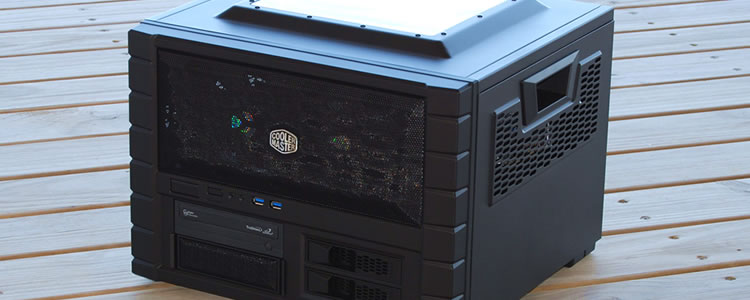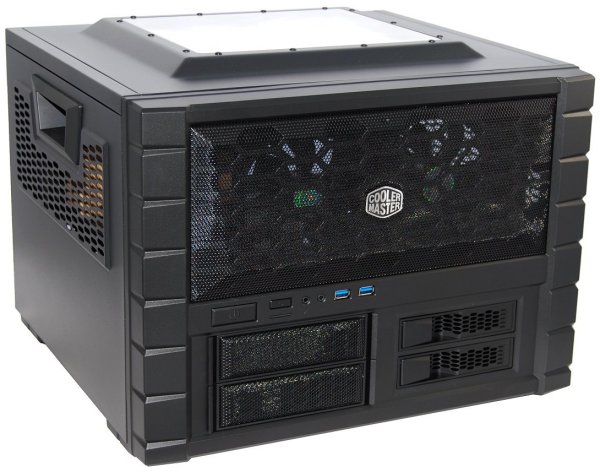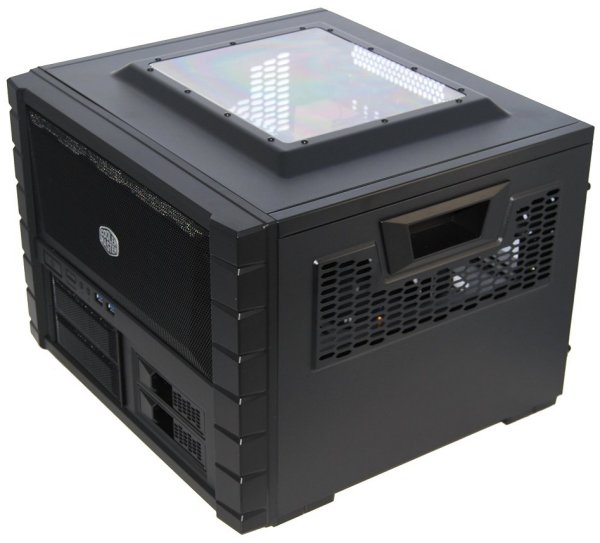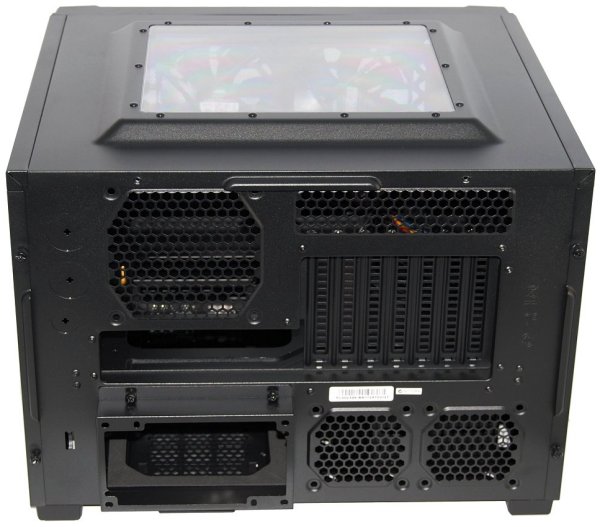Following the success of 2008's HAF 932 chassis, Cooler Master didn't waste any time adapting its High Air Flow design to various other form factors and price points – many of which we've covered in depth. Along with its larger options, the company offers three mid-towers: the $50 HAF 912, $100 HAF 922 and $130 HAF XM.
While the cost of these cases varies significantly, they're all fairly similar in terms of stature in that their tall, rectangular profile resembles most other mid-towers. Mixing things up, Cooler Master's latest mid-size enclosure breaks the conventional mold with boxier dimensions – in fact, the company describes it as a "LAN box".
Given the HAF XB's cube-like figure, it's no surprise that Cooler Master is pushing the LAN-friendly angle, which seems to be increasingly common among case makers. Although this may not be the first chassis to boast about being portable, its shape does seem to offer an inherent advantage over products such as the Storm Scout 2.
Whereas the Storm Scout 2 and similar designs have a handle integrated into the top of a standard mid-tower enclosure, the HAF XB has handles built into each side. That may sound trivial, but the difference between a one-handed side grip and two-handed front grip is appreciable if you're hauling over 30kg (66lbs) of hardware.
In addition to targeting LAN-goers, Cooler Master is pitching the HAF XB as an ideal test bed – kind of like the Antec Skeleton, except the HAF XB is more of a complete product. Considering our mixed experiences with unconventional chassis designs, we're not sure what to make of the HAF XB, but there's one surefire way to find out...
HAF XB External Features
We really liked the HAF 932's aggressive looks, but we imagine the HAF X's subtler design is appealing to more people, so we're not surprised about Cooler Master opting for that aesthetic blueprint on the HAF XB.
As you would expect, the HAF XB's dimensions are unusual for a mid-sized ATX case, measuring 17.4" wide, 16.7" long and 13" tall (44.2 x 33.0 x 42.3cm). Compared to the full tower HAF X, the XB is 91% wider but 29% shorter depth-wise and 40% height-wise.
It is constructed from SECC (Steel, Electrogalvanized, Cold-rolled, Coil) – a type of metal known for its low cost and high thermal conductivity, making it ideal for computer cases. There is also a lot of plastic used, but it's tastefully implemented. All in all, the HAF XB weighs 18.1lbs (8.2kg) making it significantly lighter than the HAF X, which tips the scales at 31.6lbs (14.35 kg).
From the front, the HAF XB looks much like the HAF X if it had been placed in a compactor and saved at the last minute. On the top portion of the front façade there is a large grill that hides a pair of 120mm intake fans and this is the most dominant feature on the front of the HAF XB.
Below the grill is an I/O panel which is integrated into a raised strip across the middle of the façade. The design is simple and blends in well. There is a large rectangular power button followed by the smaller rectangular reset button, two audio jacks and a pair of USB 3.0 ports.

Following the I/O panel is a pair of external 5.25" drive bays alongside two hot-swappable external 3.5" bays. Since the HAF XB only supports two 3.5" drives, we're pleased to find that Cooler Master has made them externally accessible using a hot-swappable design.
Moving to the top of the HAF XB, we find a raised panel with a Perspex window. Apparently there are two versions of this case, the one that we have with the window and another with a mesh panel that supports a 200mm fan. As much as we like the window, the extra airflow is probably the way to go for higher-end systems.
Like most cases, the HAF XB has left and right hand doors that can be removed individually, but the top can also be undone. Both side doors are identical, featuring a large indented handle followed by a large air vent. The doors measure 16.7" long and 13" tall and are secured using a pair of thumbscrews.

Behind the HAF XB, you'll find an unusual setup that mounts the power supply in the bottom left corner of the case. The power supply will also sit out from the case by an inch which helps to save room inside and enables support for extra-long units.

Opposite the power supply bracket is a pair of unoccupied 80mm grills that can be used to improve circulation around the hard drives. Above them is the motherboard's I/O panel and seven expansion slots. Finally, there is room for an optional 120mm exhaust fan and we're disappointed that a fan doesn't come standard here.




